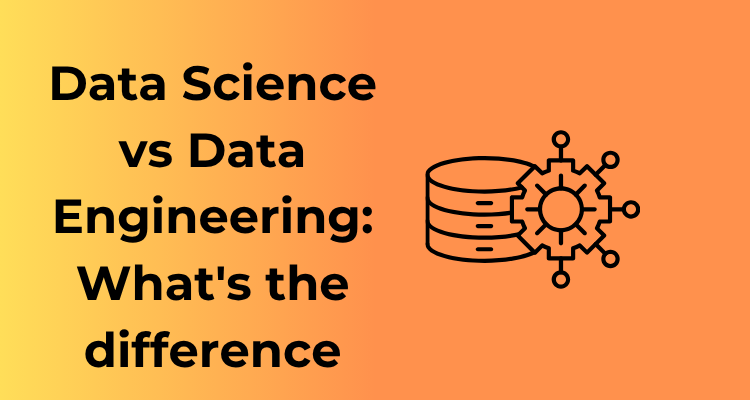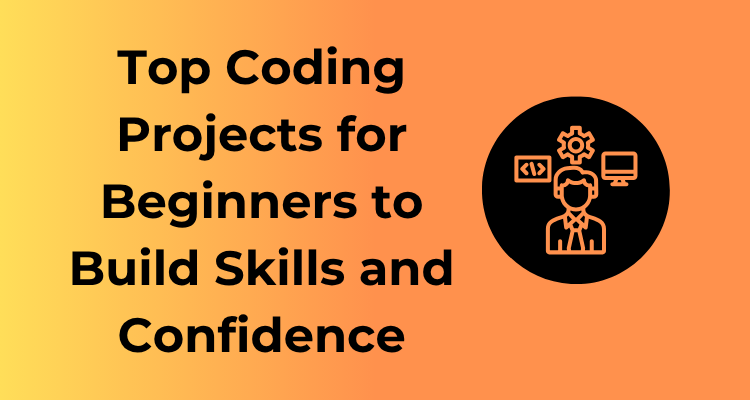Let’s take a moment to think about the immense world of data. It’s everywhere, buzzing in the background of nearly every industry. But when it comes to making sense of this data and turning it into something actionable, two key roles step onto the stage: data scientists and data engineers. While their titles sound similar, their areas of expertise and responsibilities are distinct. Buckle up—this is where we break it all down!
What Do Data Scientists Do?
If data were like a treasure chest, data scientists are the treasure hunters. They’re curious, analytical, and work to extract valuable insights from raw data. Their ultimate goal? Driving business decisions through trends, patterns, and predictions. Sounds pretty cool, right?
In their day-to-day, data scientists ask and answer complex questions. For instance:
- Who are our best customers?
- What product is likely to trend next year?
- How can we make this process more efficient using data-driven strategies?
To make this magic happen, they use tools like Python, R, and machine learning models. Their job requires a knack for storytelling too, because presenting the data in a way that’s easy for others to understand is just as important as crunching the numbers.
How About Data Engineers?
If data scientists are treasure hunters, data engineers are the ones building the maps and preparing the tools. Without them, data scientists would be fumbling around in the dark! These behind-the-scenes heroes construct and maintain the frameworks that store, organize, and process data.
A data engineer’s responsibilities often involve:
- Designing and optimizing data pipelines
- Creating databases or data warehouses
- Ensuring data is accurate, accessible, and secure
Think of it this way: when you hear the word “infrastructure” (whether in terms of roads or technology), you know it’s vital, But it’s often overlooked because it works in the background. Similarly, data engineers’ work isn’t on the flashy side—but without them, there’s no foundation for the house.
The Key Distinction
Here’s the simplest way to differentiate their roles:
- Data Scientists are consumers of data. They take clean, ready-to-use data and apply their expertise to derive insights or build predictive models.
- Data Engineers are providers of data. They build the technical architecture that ensures data flows smoothly and remains reliable.
Ultimately, the magic happens when both roles come together, leveraging their unique skills to tackle big challenges. It’s a team effort!
Core Responsibilities: How Each Role Transforms Data
Imagine data is like muddy water. Not incredibly useful, right? Now, whether you’re a data scientist or a data engineer, it’s your job to change that muddy water into something clear and valuable, like drinking water or even sparkling lemonade! But how do these roles differ in their approach to turning raw data into gold? Let’s dive in.
Data Engineers: The Builders of the Bridge
Think of data engineers as architects and construction workers. Their main responsibility is building solid, scalable foundations that enable data to be collected, stored, and transported efficiently. Without them, data would be like scattered puzzle pieces with nowhere to go.
Here are some of their core tasks:
- Building Data Pipelines: They design and develop systems that gather raw data from multiple sources and move it into a centralized repository like a data warehouse or lake.
- Data Warehousing: Data engineers create organized systems to store data securely, ensuring it’s structured and ready for analysis later on.
- Ensuring Data Quality: Data engineers often clean and handle errors in raw data, ensuring it’s accurate, complete, and consistent.
Think of them as the ones working behind the scenes, ensuring that when a data scientist or report-generator needs specific data, it’s delivered neatly and reliably. They make the impossible possible!
Data Scientists: The Insight Hunters
Once the data is prepped and ready thanks to the engineers, data scientists step in. They’re like detectives, using their analytical minds and cutting-edge tools to uncover hidden patterns and meaningful insights. They take it a step further by making actionable recommendations based on their findings.
Their responsibilities include:
- Data Exploration: Data scientists dive into data provided by engineers, exploring and analyzing patterns, trends, and outliers.
- Building Predictive Models: They leverage machine learning algorithms to forecast what might happen in the future — like predicting customer behavior or stock prices.
- Storytelling with Data: Using visualizations and storytelling, data scientists present their findings in a way that non-technical stakeholders can understand and act on.
Picture them as the ones turning data into a story that answers big-picture questions such as, “Why did sales dip last quarter? What can we do to prevent customer churn?”

Collaboration: Bridging Science and Engineering
While their tasks may seem distinct, data scientists often rely on data engineers for clean and organized data. Conversely, engineers need insights from scientists to understand what kind of data structures and pipelines they should develop. Think of it as teamwork where one lays the track, and the other drives the train to its final destination.
Technical Skills Breakdown: Tools, Frameworks, and Languages
Ah, the world of technical skills! This is where we unlock the toolbox of a data scientist and a data engineer to see just what makes their roles tick. Let’s dive into their arsenals, and you’ll discover the tools, frameworks, and languages each of these professionals rely on to do their magic.
Data Scientists: The Toolbox for Analyzing and Predicting
Data scientists are laser-focused on extracting actionable insights from data, and their technical skills are geared toward analysis, modeling, and machine learning. Some of the most common tools and technologies they use include:
- Programming Languages: Python and R are their bread and butter, offering robust libraries for data analysis (think Pandas, NumPy) and machine learning (Scikit-learn, TensorFlow).
- Data Visualization Tools: Don’t underestimate the power of telling a story with data! Tools like Matplotlib, Seaborn, and Plotly in Python, as well as Tableau and Power BI, are household names here.
- Statistical Modeling and Machine Learning: Proficiency in frameworks like TensorFlow, PyTorch, and XGBoost helps them build predictive models.
- SQL: This database querying language is critical for pulling and working with structured data sets from relational databases.
In essence, data scientists need to be comfortable swimming in the oceans of data, performing anything from exploratory data analysis (EDA) to building sophisticated machine learning models. Creativity and curiosity are key – these are the people who transform raw data into “aha!” moments.
Data Engineers: The Backbone of Data Infrastructure
If data scientists are the ones analyzing the treasure trove, data engineers are the treasure map creators. They build, maintain, and optimize the pipelines that make sure data flows smoothly and is trustworthy. Here’s what a data engineer’s toolbox looks like:
- Programming Languages: Python, Java, and Scala are often used for designing pipelines and working with distributed systems.
- Data Frameworks: Apache Spark, Hadoop, and Apache Kafka are commonly used for processing big data at scale.
- Database Expertise: MySQL, PostgreSQL, MongoDB, and Cassandra are just a few of the databases data engineers are adept at managing. They also work with data warehouses like Snowflake, Redshift, and Google BigQuery.
- Cloud Platforms: AWS, Microsoft Azure, and Google Cloud are key players as data engineers deploy and manage data workflows in the cloud.
- ETL Tools: Extract, Transform, Load (ETL) processes are a core responsibility, and tools like Apache NiFi, Talend, or AWS Glue are frequently used to streamline this.
Think of data engineers as the gritty builders ensuring all the massive, messy, and unstructured data is cleaned, organized, and ready for use by data analysts and scientists. Precision and efficiency are their watchwords.
Overlap: Where the Worlds of Science and Engineering Meet
While data scientists and engineers have distinct roles, there’s a growing convergence in their skill sets, especially as industries demand professionals who can wear multiple hats. For example:
- Both need a solid understanding of SQL for querying databases.
- Proficiency in Python or another versatile language is essential for both roles.
- While data scientists may traditionally focus on models, they may dip their toes into engineering when it comes to setting up data pipelines for small-scale projects.
If you’re considering stepping into either role, it’s worth remembering that flexibility and a willingness to learn tools from “the other side” can make you an even more valuable professional.
Educational Paths: What’s Needed to Excel at Each
So, you’re considering stepping into the world of data, huh? It’s an exciting field with plenty of opportunities, but deciding whether to pursue a path in data science or data engineering can be tricky. Let’s break it down and look at the ideal educational journeys for these roles. No need to stress – it doesn’t take a magic formula, just some focused learning based on your passion and skillset!
Becoming a Data Scientist
Data scientists are the detectives of the data world. They uncover insights, predict trends, and solve problems using advanced analytics. If that sounds up your alley, a strong educational foundation is a must. Here’s what typically helps:
- Academic Background: A bachelor’s degree in fields like Mathematics, Statistics, Computer Science, or a related discipline is a great starting point. However, many data scientists go a step further with a master’s or even a PhD in fields like Data Science, Machine Learning, or Applied Mathematics.
- Key Coursework: Deep dive into statistics, probability, and linear algebra. You’ll also need programming skills – Python and R are your best friends here – along with knowledge of machine learning, data visualization, and domain-specific modeling.
- Certifications: Adding relevant certifications like Google’s Data Analytics Professional Certificate or other specialized data science programs can boost credibility and expand your skillset.
Learn by doing – this is your mantra. Open-source projects, Kaggle competitions, and real-world case studies provide invaluable hands-on experience.
Becoming a Data Engineer
If you’re more interested in building the foundation, crafting the pipelines, and ensuring that data flows smoothly from one place to another, data engineering might be your calling. This field is all about constructing the architecture that enables data scientists to work their magic. Here’s the path to mastering it:
- Academic Background: A bachelor’s degree in Software Engineering, Computer Science, or Information Technology is a common starting point. A strong base in software development and systems design is crucial here.
- Key Coursework: Core programming knowledge in languages like Python, Java, or Scala is key. You’ll also need to focus on database systems (SQL and NoSQL), distributed computing, ETL (Extract, Transform, Load) processes, and big data technologies (Hadoop, Apache Spark, Snowflake, or similar).
- Certifications: Pursue specific certifications like Google Cloud’s Professional Data Engineer or AWS Certified Data Analytics Specialty to showcase expertise in cloud platforms and modern data practices.
Remember, data engineers thrive on problem-solving and optimization. Build personal or open-source projects that simulate real-world engineering challenges like creating data pipelines or managing large datasets.

Project Collaboration: How Data Scientists and Engineers Work Together
Picture this: a high-performing sports team. Each player has their unique role, skill set, and responsibility that drives the entire team toward victory. Now, imagine this same concept applied to the world of data, and you’ve got the dynamic duo of data science and data engineering. Collaboration between these two roles might not involve team huddles or pep talks, but it’s absolutely essential to the success of any data-driven project.
Breaking Down the Relationship
At its core, data scientists and data engineers work toward the same goal—extracting value from data. However, their contributions are distinct and complementary.
- Data Engineers build and maintain the data infrastructure. They create reliable pipelines to process, clean, and transform raw data from various sources into a form that’s usable by analysts and scientists.
- Data Scientists, on the other hand, interrogate the data to derive actionable insights. This often involves statistical modeling, machine learning, and generating predictive or prescriptive analytics.
Without collaboration, there’s potential for inefficiency or worse—data chaos! Engineers may create pipelines that don’t meet the needs of analysis, or scientists might struggle to make sense of poorly processed or unorganized data.
The Workflow of Collaboration
Let’s demystify how these roles dance together in their shared pursuit of data excellence:
- Understanding Requirements: The first step is communication. Data scientists often provide input on the kind of data they need for analysis, detailing the format, frequency, and granularity. Data engineers then translate these needs into technical specs.
- Pipeline Development and Testing: Based on agreed-upon requirements, data engineers construct end-to-end pipelines with tools like Apache Spark, Kafka, or Airflow. This is where the engineers shine, ensuring the data flows efficiently and is stored securely in databases or data warehouses.
- Model Deployment: Once data scientists build and test their models, data engineers often step in to facilitate smooth integration. They may even optimize these models for production environments, ensuring scalability and reliability.
- Feedback Loop: Collaboration doesn’t end after deployment. Data scientists may realize they need additional features or tweaks to the pipelines, and engineers might provide critical feedback about system performance or bottlenecks.
Best Practices for Collaboration
How do data scientists and engineers make this workflow harmonious? Here are a few golden rules:
- Clear Communication: Discussing requirements and technical constraints up front avoids confusion later. Regular sync-ups are vital.
- Shared Tools: Using common platforms and frameworks (like Jupyter for scientists and Spark or Hadoop for engineers) streamlines the handoff process.
- Empathy: Both roles should make an effort to understand one another’s challenges, ensuring better cooperation and mutual respect.
Industry Demand and Pay Scales: Which Role is Growing Faster?
So, you’re curious about which role is a better long-term bet: data science or data engineering, right? It’s a great question and one that’s definitely worth diving into. Both fields are incredibly important in today’s data-driven world, but when it comes to demand and earning potential, there are a few key differences to note.
Growing Demand Across Industries
Let’s start with industry demand. Over the past decade, businesses across the globe have been getting serious about putting data to work. Whether you’re looking at retail businesses optimizing supply chains, healthcare providers personalizing treatments, or tech companies building AI, data professionals are the backbone of these efforts.
- Data Scientists: These professionals are often in demand for project-based roles that require advanced statistical modeling, predictive analytics, and machine learning. Industries like finance, tech, and biotech are especially heavy recruiters for data scientists.
- Data Engineers: In comparison, data engineers are needed wherever there’s a sustained need to build and maintain infrastructure. They set the stage by creating robust pipelines, data lakes, and warehouses that allow data scientists to do their thing. Think cloud computing companies, e-commerce giants, and any organization scaling its data operations.
Interestingly, the demand for data engineers has seen rapid growth lately, as companies recognize that clean, accessible data is critical before analysis can even begin. This says one thing loud and clear: both roles are growing, but data engineering roles are picking up the pace fast!
Pay Scales Speak Volumes
When it comes to salaries, both roles are lucrative, but nuances exist. According to 2023 industry data:
- Data Scientists: On average, data scientists earn around $100,000 to $130,000 annually in the U.S., depending on experience and industry. Senior-level data scientists often push well into six figures.
- Data Engineers: Data engineers are not far behind! Their paychecks typically fall within the $95,000 to $125,000 range, with greater payout for those specializing in cloud infrastructure or big data technologies like Hadoop and Spark.
What’s fascinating is that while data science salaries have been steady, data engineering salaries are rising sharply alongside demand. And who doesn’t love a pay trend that’s trending upward?
What This Means for You
Alright, let’s make things a bit clearer for you. If you’re someone who loves solving intricate, algorithm-driven problems, data science might feel more exciting. But if you’re the kind of person who enjoys building the actual architecture that allows people to use data seamlessly, data engineering might be your sweet spot.
Choosing Your Path: Aligning Skills with Career Goals
Deciding whether to pursue a career in data science or data engineering is like choosing between two thrilling adventures. Both paths are rewarding, but each has its own landscape, challenges, and treasures to uncover. Let’s dive into how you can align your unique skills, interests, and passions with the career path that suits you best!
What Are Your Interests?
The first question to ask yourself is: what sparks your curiosity? Data science and data engineering are like two sides of the same coin, but they cater to different passions. If you’re someone who loves diving into data to uncover patterns, building predictive models, and playing with algorithms, then data science might excite you. It’s all about bringing insights to the surface and answering “why” questions using statistical techniques.
On the flip side, if you’re the kind of person who enjoys building systems, optimizing workflows, and creating robust data pipelines that ensure smooth data flow, data engineering will feel like your playground. Data engineers work behind the scenes, solving the “how” problems and enabling data scientists to do their magic.
Take Stock of Your Strengths
Your natural talents and existing skills play a big role in making this decision. Here’s a quick comparison of skills for each role:
- Data Science: Strong analytical thinking, proficiency in statistics, expertise in machine learning, and familiarity with tools like Python, R, or SQL.
- Data Engineering: Solid grasp of database architecture, expertise in distributed systems like Hadoop or Spark, proficiency in coding languages like Java or Scala, and experience with cloud platforms.
Don’t worry if you have gaps in your skills—both roles encourage continuous learning. Take your strengths into account for a realistic starting point!
Personality Matters Too
Here’s a fun fact: personality traits can often indicate which role you might thrive in!
- If you love working with ambiguity, solving open-ended problems, and tackling challenges where there’s no single “right” answer, data science will feel like home.
- If you prefer structure, enjoy building scalable solutions, and take pride in creating systems that are efficient and dependable, data engineering might be your calling.
Explore Opportunities Before Committing
Still feeling torn? That’s completely natural. One great way to test the waters is by exploring internships or entry-level roles that offer exposure to both data science and data engineering. You’ll get a hands-on understanding of each field, which can be invaluable as you figure out which one clicks with you.
Additionally, try taking online courses or working on personal projects. Build a simple machine-learning model or create a small ETL pipeline (Extract, Transform, Load) in your downtime. These experiments not only boost your skills but also help clarify your preferences.
Remember, It’s Not Set in Stone
Amazing news: your choice doesn’t have to be final. The tech industry is dynamic, and it’s very common for professionals to pivot. Data scientists and data engineers often share overlapping knowledge, so transitioning between these roles later in your career isn’t uncommon.








